Author: Michal Šedivý
April 23 marks the 200th anniversary of the birth of Vojtěch Ignác Ullmann, one of the leading Czech architects. Let us commemorate the work of this pioneer and key representative of the so-called Czech Neo-Renaissance through four objects from the peak of his creativity. These buildings are accessible for free during Open House Prague 2022.
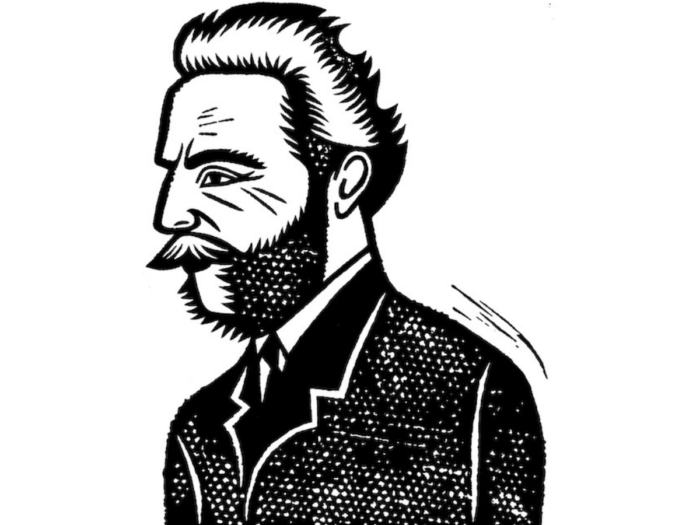
Early Career
Vojtěch Ignác Ullmann was born into a wealthy Prague family and after graduating from the Prague Polytechnic he went to Vienna, where he became a student of architecture under the authors of the Imperial Opera House – professors August von Siccardsburg and Eduard van der Nüll. One of their students was Otto Wagner, the founder of the Austrian Art Nouveau, teacher of Jan Kotěra and Jože Plečnik. After returning to Prague, Ullman married Terezie Barvitiová and later carried out various constructions together with her brothers.
Early in his career, his work was strongly inspired by the then cosmopolitan Neo-Gothic and he worked with German-speaking architects and clients. If we leave aside his work on adaptations of aristocratic mansions (e.g. Čechy pod Kosířem in the Haná region), it is necessary to mention especially his participation in the construction of the main church in Karlín – the Church of St. Cyril and Methodius – and the design of the palace of Vojtěch Lanna Sr. in Nové Město.
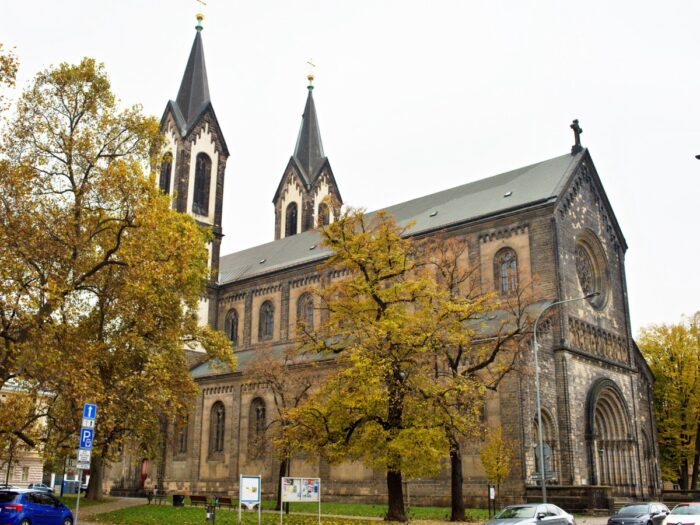
His turn to Neo-Renaissance in the 1860s became fundamental for Ullmann’s work and for Czech architecture in general; Ullmann’s work soon became an inspiration for other artists and a kind of model for new and then “modern” constructions.
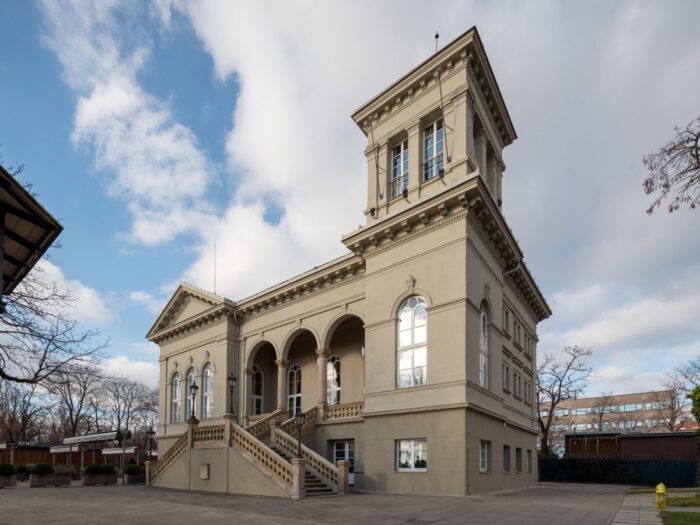
Shift Towards Neo-Renaissance
A typical example of Ullmann’s Neo-Renaissance architecture is the building of the Czech Savings Bank (now the CAS on Národní třída) from the late 1850s and early 1860s, proudly representing modern financial business, but also classical European architectural heritage. Ullmann subsequently evokes the Renaissance in the immediate vicinity – when working on the Lažanský Palace in 1861. At that time, however, he would find inspiration in France, while in the case of later realizations of the Provisional Theater and the Letná Chateau, he would again return to forms inspired by Italian architecture.
Peak of Creative Period
He then perfectly applied this style canon when erecting the Sokol Gymnasium in Nové Město, the first Sokol gym in Prague, which also represented the efforts of the Czech revival in the Prague society of the time. Less strict, but all the more playful and even folkloric, is the building of the Secondary School for Girls from 1865 in the national colors of red and white. In the then still pre-modern Nové Město, the building must have given the impression of being from another world, not only in its scale, but also in its unusual beauty and uniqueness. Many see it as an inspirational precursor to the later National style of the Rondocubist forms of the nearby Adria Palace, which played with similar shapes and almost identical color palette. A trip to the lands of oriental stories was the contract for the Spanish Synagogue of 1867, whose style also evoked the heyday of education and humanity
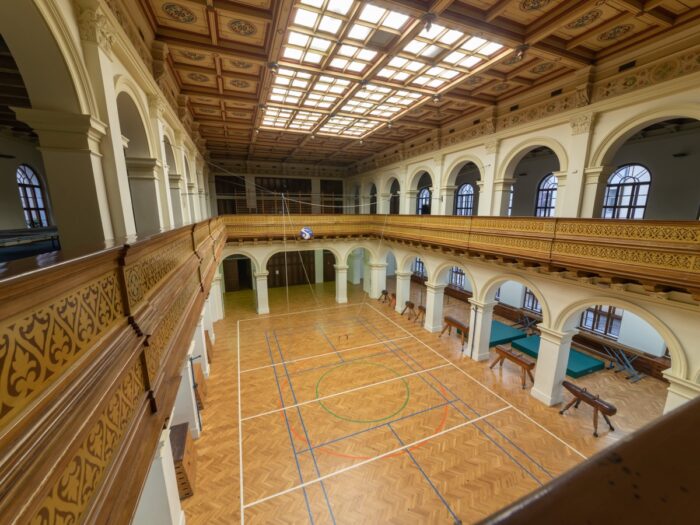
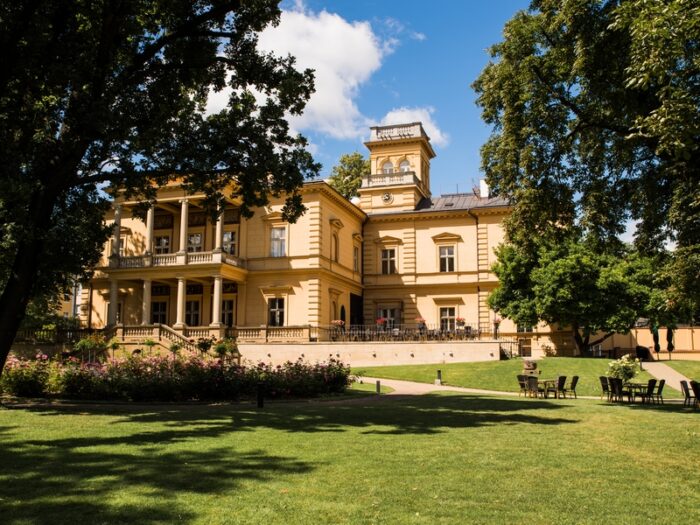
First Neo-Renaissance Villa in the Czech Lands
Ullmann returned to the classical or Renaissance inspiration immediately afterwards, when working on a private, but still very prestigious project – a suburban family villa for one of the most important businessmen of the Austro-Hungarian Empire, Vojtěch Lanna Jr. The villa is particularly striking for its rich artistic decoration, including not only the reliefs on the façade but also the wall frescoes that draw inspiration from ancient mythology. At the turn of the 1860s and 1870s, the Franz Joseph Railway Station (now replaced by Fanta’s Art Nouveau building) and the two palaces on today’s Politických vězňů Street followed in quick succession.
Final Projects
The culmination of the Prague implementations is the Czech Polytechnic Institute on Charles Square, which represents only a fragment of the original design, but is still extremely impressive for its almost austere monumentality.
Later failures in the competitions for the construction of the Rudolfinum and the National Museum contributed to the fact that Vojtěch Ignác Ullmann withdrew and at the end of his life stayed away from Prague. He is buried in Příbram, where the last of his works can be found.
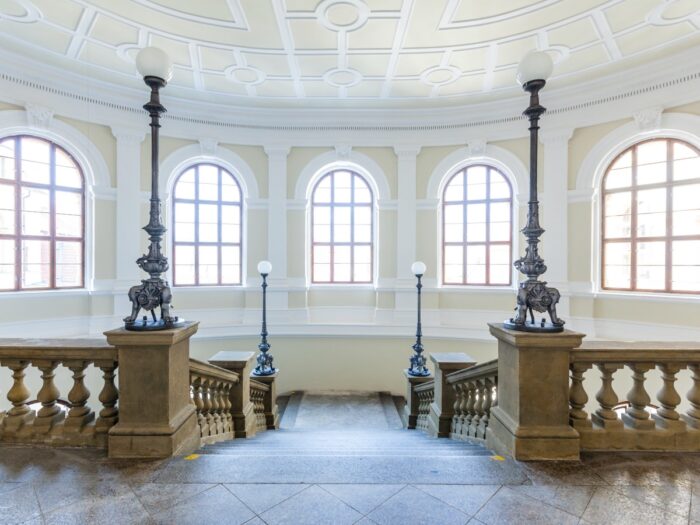
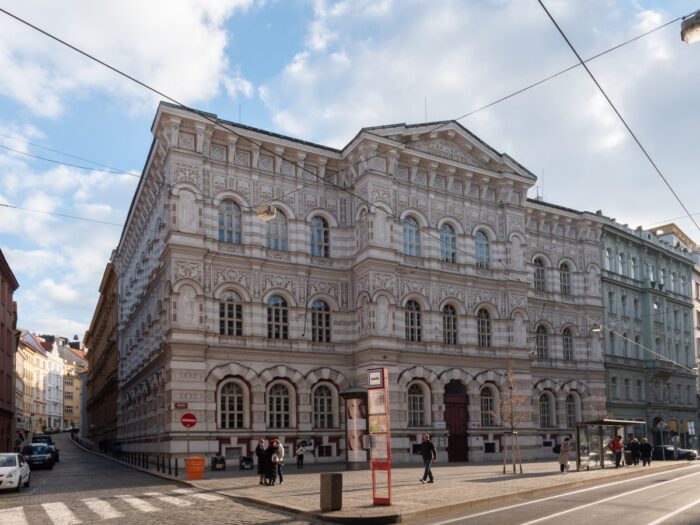
Ullmann’s Buildings at Open House Prague 2022:
- Sokol Gymnasium in Nové Město (1863–1864),
- Secondary School for Girls – Vodičkova Elementary School (1865–1867),
- Villa Lanna (1868–1872),
- Czech Polytechnic Institute – Faculty of Mechanical Engineering, CTU (1871–1875).
Partner of the theme route: Reflex
Comments are closed here.